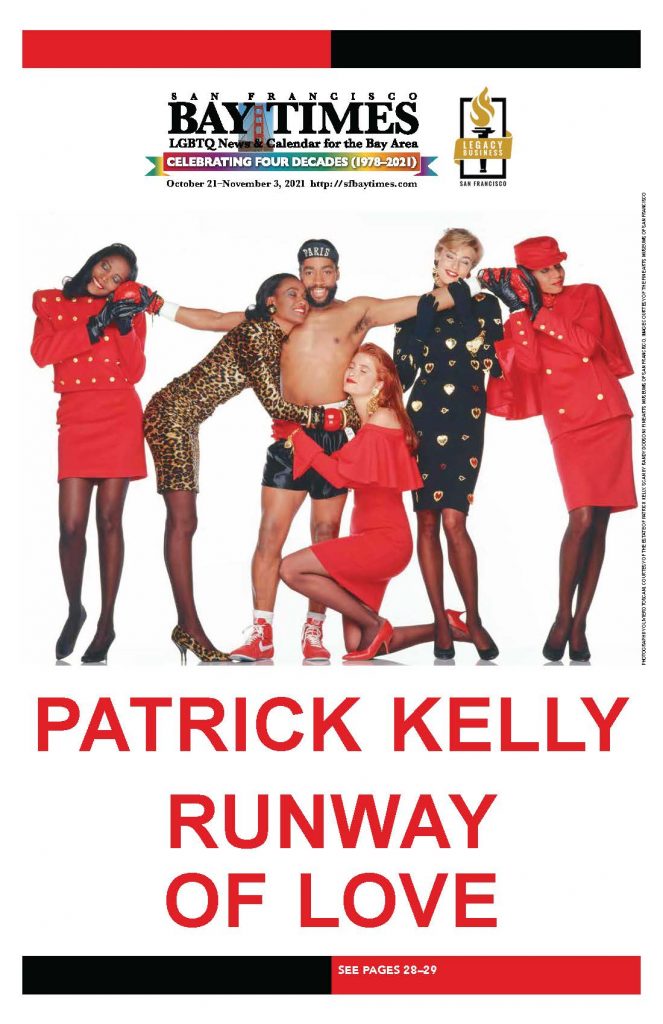
Celebrated fashion designer Patrick Kelly (1954–1990) was just 35 years old when he succumbed to AIDS, and yet his work often appears to be as vibrant and boundary-pushing today as it was during his lifetime now more than two decades ago. His enduring message of love—one that boldly asserted Black empowerment and fearlessly pushed the boundaries of fashion—is evident in the exhibit Patrick Kelly: Runway of Love, which will be on view from October 23, 2021–April 24, 2022, at the de Young.

“I want my clothes to make you smile,” said Kelly, who was born in Vicksburg, Mississippi, and developed an upbeat, creative vision despite the many challenges he faced as a Black gay youth raised primarily by his mother and grandmother after his father’s passing in 1969. Kelly briefly attended Mississippi’s Jackson State University before moving to Atlanta and then to New York. With an anonymously-gifted plane ticket in hand, he arrived in Paris at age 25.
In the City of Lights, he spent several years freelancing as a designer before, in 1985, creating the company and fashion line Patrick Kelly Paris with his business and life partner Bjorn Guil Amelan. Together they took on the world with clothing that became not only internationally known but also representative of his personal expression that fearlessly addressed Blackness, systemic racism, and the queer experience.
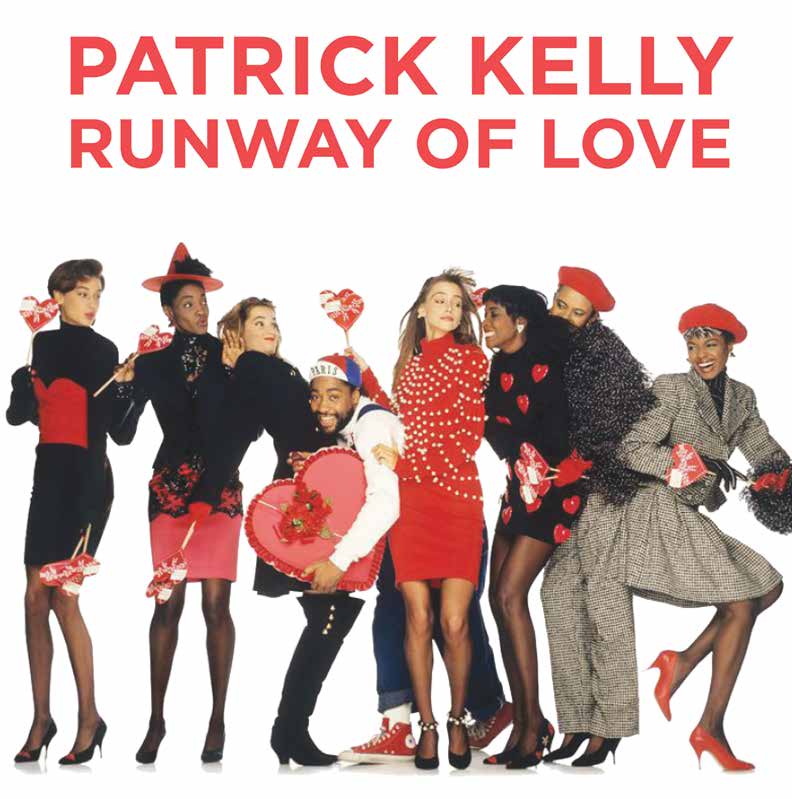
Members of our San Francisco Bay Times team have been eagerly awaiting the arrival of Runway of Love, which was announced during the COVID-19 pandemic shutdown. Now, with the museum open and mandates lifting, the exhibit will bring Kelly’s captivating work to West Coast audiences. It will spotlight nearly 80 of his memorable designs.
“The de Young museum has always been committed to showcasing the world’s finest fashion designers, and we could not be more delighted to present Patrick Kelly: Runway of Love to our audiences,” said Thomas P. Campbell, Director and CEO of the Fine Arts Museums of San Francisco. “Kelly was a trailblazing artist who created an extraordinary array of designs during his lifetime. Everyone should know the name Patrick Kelly and we hope this exhibition does just that.”
Though Black fashion designers have continuously pushed the industry’s barriers, Kelly was a true groundbreaker. His bold and bright creations stood out on the streets, in nightclubs, and especially on the runway. This extraordinary vision resulted in Kelly becoming the first American and first Black designer to be voted into the Chambre Syndicale du Prêt-à- Porter des Couturiers et des Créateurs de Mode, a prestigious French association for ready-to-wear designers. Perhaps more remarkably, Kelly was lauded with such accolades while being, and remaining, one of the few designers who directly addressed issues of race in his work.
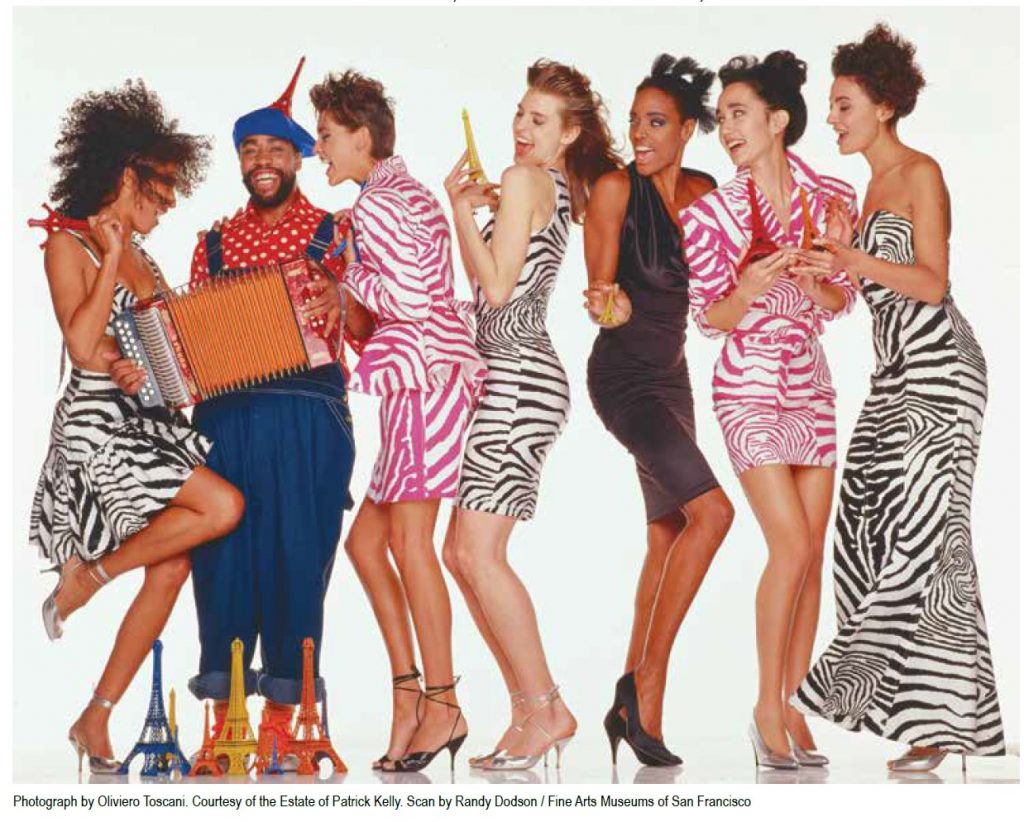
The exhibit situates Kelly and his designs in the broader context of art and fashion history by looking deeply at his inspirations. Through seven different sections, it explores his influences, including his Black heritage, memories of his childhood in the South, experiences in the club and gay cultural scenes in New York and Paris, and his muses from art, fashion, and Black history.
We recently learned more about Kelly and Runway of Love thanks to Laura L. Camerlengo, Associate Curator of Costume and Textile Arts at the Fine Arts Museums of San Francisco and Presenting Curator of the exhibition.
San Francisco Bay Times: It’s remarkable how Patrick Kelly was self-taught and had such an early vision of what he wanted to do. Who were his primary mentors during his childhood and formative years, and how did they influence him?
Laura L. Camerlengo: Patrick Kelly was born and raised in Vicksburg, Mississippi, by strong women. His mother taught him to draw, and an aunt taught him to sew. In several interviews, he acknowledged his grandmother as the “backbone” of his aesthetic. The styles worn by members of his church community were also a source of inspiration; he would often say, “The Black Baptist church on Sunday, the ladies are just as fierce as the ladies at Yves Saint Laurent haute-couture shows.”
San Francisco Bay Times: Vintage clothing stores were especially popular in the 70s. Kelly showed great initiative in opening his own such store in Atlanta. Do you know how long he owned the store and what sort of vintage fashion most appealed to him at the time?
Laura L. Camerlengo: The exhibition’s organizing curator, Dilys Blum, sheds light on Patrick Kelly’s time in Atlanta in her catalogue essay. Kelly opened a small shop, called Moth Ball Matinee, shortly after moving to Atlanta in 1974. There, he sold antique and secondhand clothing, as well as remodeled clothing and his own designs.
San Francisco Bay Times: Did he ever later discuss or write about problems he likely experienced growing up as a gay, Black youth and young man in Mississippi? If so, are there any specific stories you could share?
Laura L. Camerlengo: Yes, Patrick Kelly experienced racism, and recounted his experiences with racism, throughout his life. His former business and life partner, Bjorn Amelan, has continued to share these stories in the wake of Kelly’s passing. For example, Patrick Kelly’s childhood textbooks were hand-me-downs from white schools, filled with racist notes for their future readers. Kelly had to thumb through images of blackface to study—a painful memory that stayed with him throughout his life.
San Francisco Bay Times: Was it ever determined who gave him (anonymously) his first one-way ticket to Paris in 1979?
Laura L. Camerlengo: Yes, it was the supermodel and superstar Pat Cleveland who bought him his one-way ticket to Paris in 1979. She connected with Patrick Kelly in New York, and saw that he was struggling to make it there as a designer. In an interview, which we shared in the exhibition catalogue, she recalled, “People helped me, I thought—that’s why I gave him the ticket—so why not help each other make our dreams come true? We just need one person to believe in us, and Patrick kept that dream alive for many more years to come.”
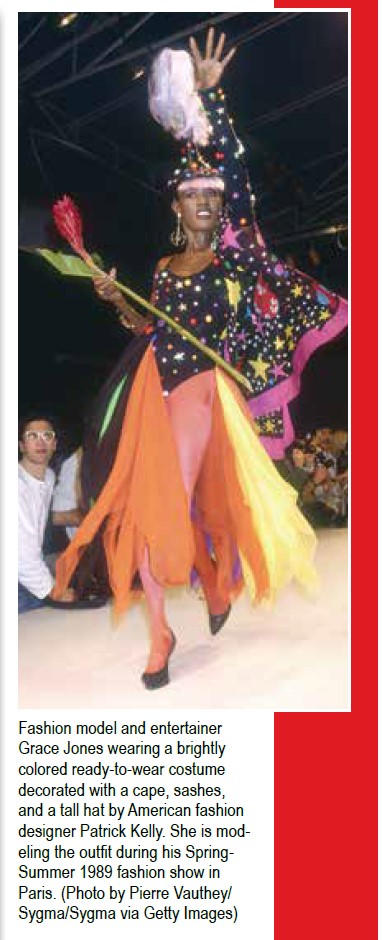
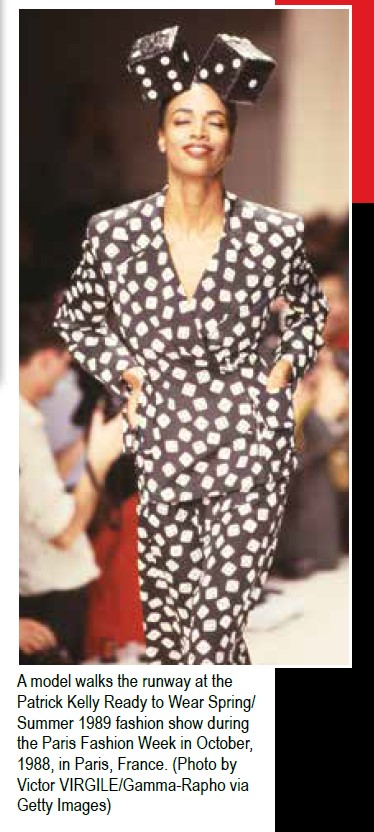
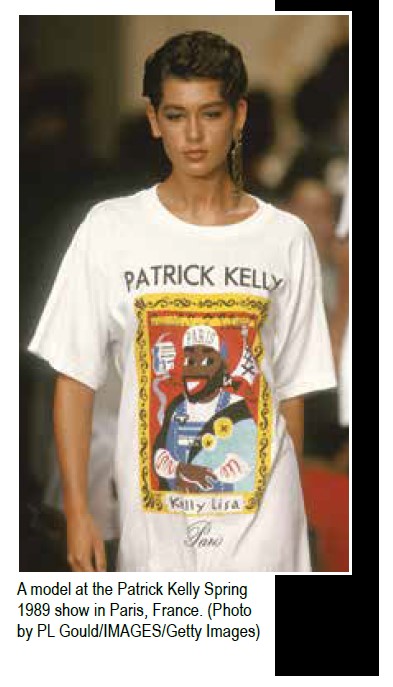
San Francisco Bay Times: Bjorn Amelan is a remarkable individual in his own right. How did he and Kelly first meet?
Laura L. Camerlengo: Bjorn Amelan and Patrick Kelly met in 1982. At the time, Amelan was a photographers’ agent for luminaries such as Horst P. Horst and William Klein. They met at the designer Willi Smith’s showroom in New York City. Kelly and Amelan reconnected in Paris in 1983, and became business and life partners thereafter.
San Francisco Bay Times: How did Kelly first connect with Gloria Steinem? She seemed to play an important role in establishing his international career.
Laura L. Camerlengo: As Dilys Blum details in our catalogue, Patrick Kelly was introduced to Gloria Steinem by New York television producer Carla Morgenstern. Kelly had connected with Morgenstern through Ellie Wolfe, whom he had met while living in Atlanta from 1974 to 1978. It was Gloria Steinem who introduced Kelly to Linda Wachner, president and CEO of Warnaco—the company that would later fund his brand. Steinem also interviewed Patrick Kelly on the Today show.
More poignantly, Gloria Steinem gave a beautiful eulogy in honor of Patrick Kelly during his memorial service at the Fashion Institute of Technology, New York, in 1990. She said, “He was an outsider who brought the outside with him, and then eliminated the outside/inside division for everyone. He unified us with buttons and bows, tassels and fringe, instead of dividing us with gold and jewels. In his presence, the ‘not powerful enough’ felt hope, and the ‘too powerful’ felt humanity.”
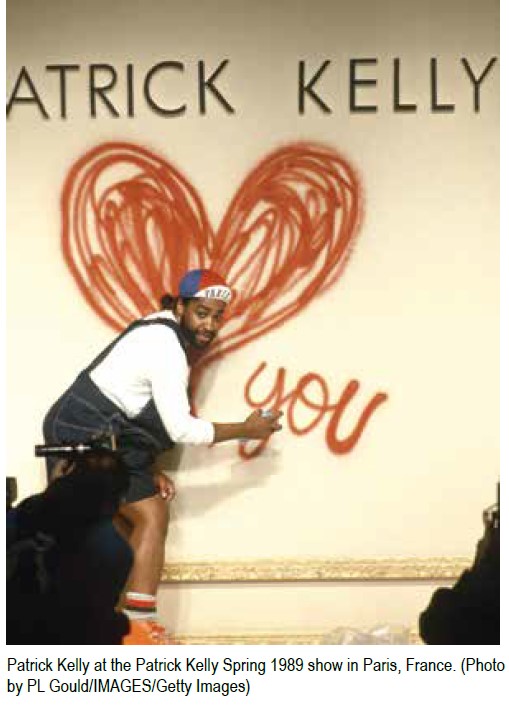
San Francisco Bay Times: What are some of your own favorite pieces in Patrick Kelly: Runway of Love? Please share why these pieces resonate with you, or otherwise strike you as being noteworthy.
Laura L. Camerlengo: It is hard to pick a favorite design—a bit like asking me to pick a favorite child! But my dear, late friend and colleague, Monica Brown—who was the impetus for this exhibition—was a great fan of Patrick Kelly’s wool suits, which feel, at once, both professional and whimsical. In honor of her, I will name those as my “favorites.”
San Francisco Bay Times: How many pieces/ensembles are new to the exhibit, coming from FAMSF? Have these items ever been on exhibit before? And please describe some of this attire.
Laura L. Camerlengo: The Fine Arts Museums of San Francisco was honored to receive several Patrick Kelly designs from two of Kelly’s former colleagues: Elizabeth “Ms. Liz” Goodrum, Kelly’s long-time assistant; and Audrey Smaltz, a famed runway show producer who also coordinated Kelly’s spirited runway presentations. The garments that will be on view in our exhibition include a “Jailhouse Rock”-themed gray and black striped knit dress, donated by Goodrum, and a bubblegum pink quilted coat printed with small images of American-born Black entertainer and activist Josephine Baker, donated by Smaltz. Several pieces of jewelry, donated by Goodrum, will also accentuate many of the ensembles loaned to us by the Philadelphia Museum of Art.
San Francisco Bay Times; What do you think Kelly’s lasting legacy is to the world of fashion and the arts? Like Keith Haring, he seemed to be a man so much of his time, and yet unique and timeless as well.
Laura L. Camerlengo: Patrick Kelly’s style signatures—such as his use of tubular knits to form body-conscious styles—have become part of the lexicon of fashion. Since his passing, the designer himself has served as a symbol of hope and a rallying cry for other Black fashion professionals, as seen most recently with The Kelly Initiative. ( https://thekellyinitiative.net/ )
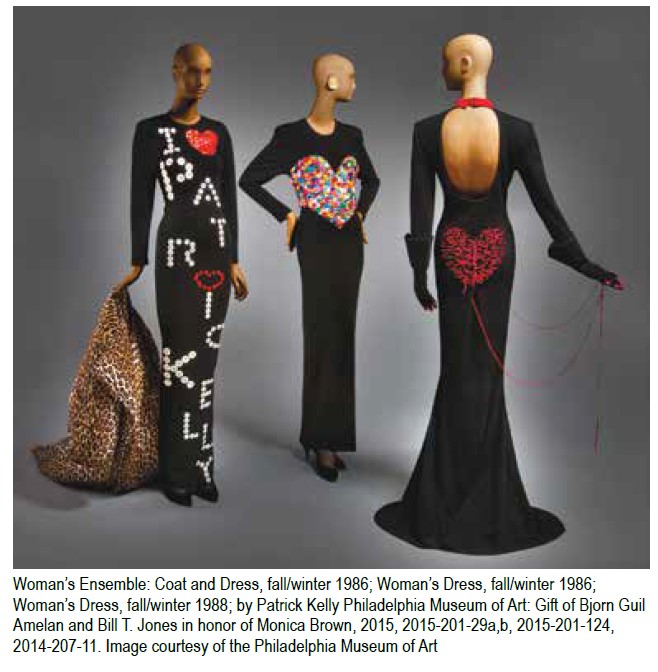
San Francisco Bay Times: It is moving that the controversial golliwog image that he used in his work—taking control of this derogatory symbol—is on his gravestone along with an image of a heart. Was that his decision? Or perhaps Amelan’s?
Laura L. Camerlengo: Yes, Bjorn Amelan drew inspiration from the signatures of Patrick Kelly Paris for the tombstone imagery, including the house’s golliwog logo and the heart button. But it is the epitaph that perhaps best embodies the designer and his legacy: “Nothing Is Impossible.”
San Francisco Bay Times: Please mention anything else that you would like for our readers to know.
Laura L. Camerlengo: Our museums’ presentation of Patrick Kelly: Runway of Love marks the first time that Patrick Kelly’s work will be presented by a West Coast museum. We have been joined in this endeavor by many of Patrick Kelly’s friends, colleagues, and collaborators; emerging scholars, such as our advising scholar, Dr. Sequoia Barnes, and established academics; and diverse members of the Bay Area community. We are thrilled to share Patrick Kelly’s important contributions to fashion and his enduring legacy with our audiences.
Published on October 21, 2021
Recent Comments